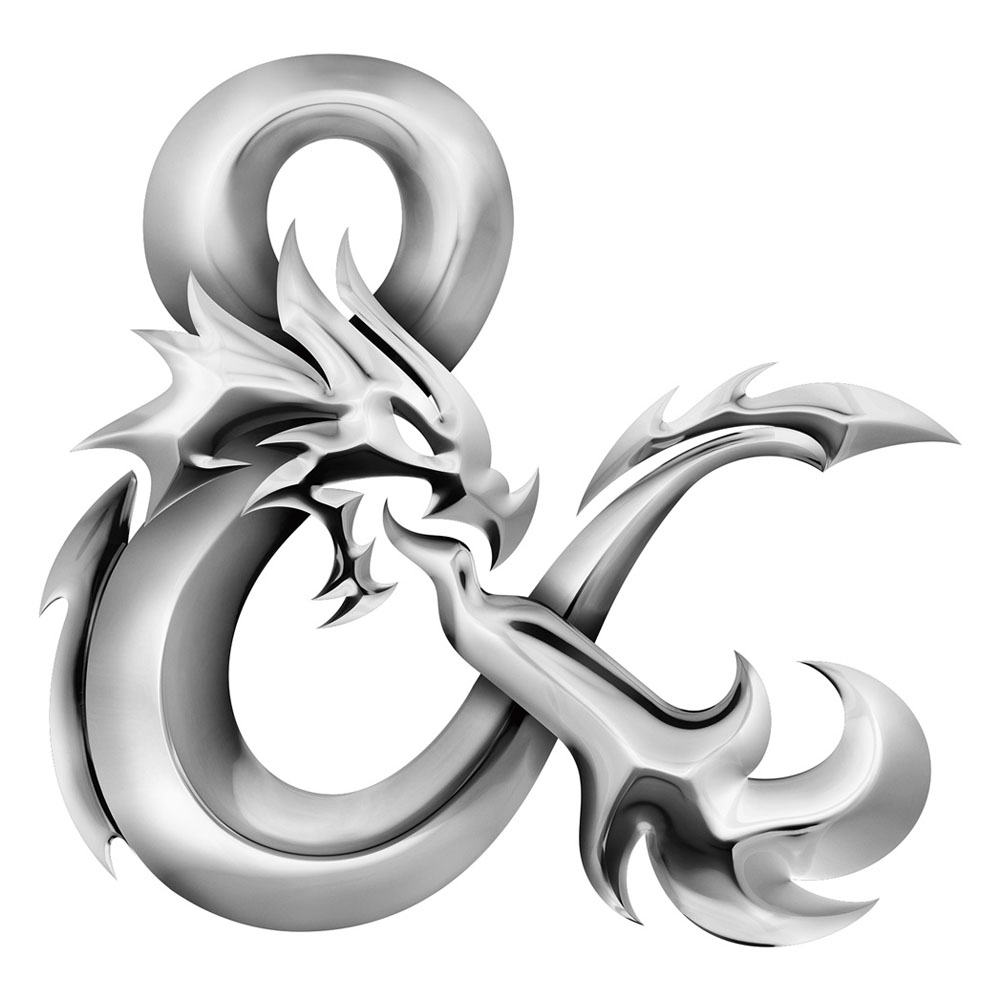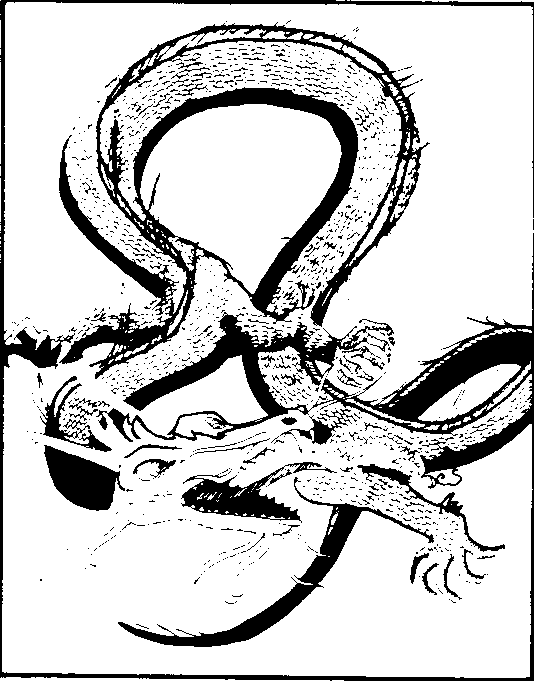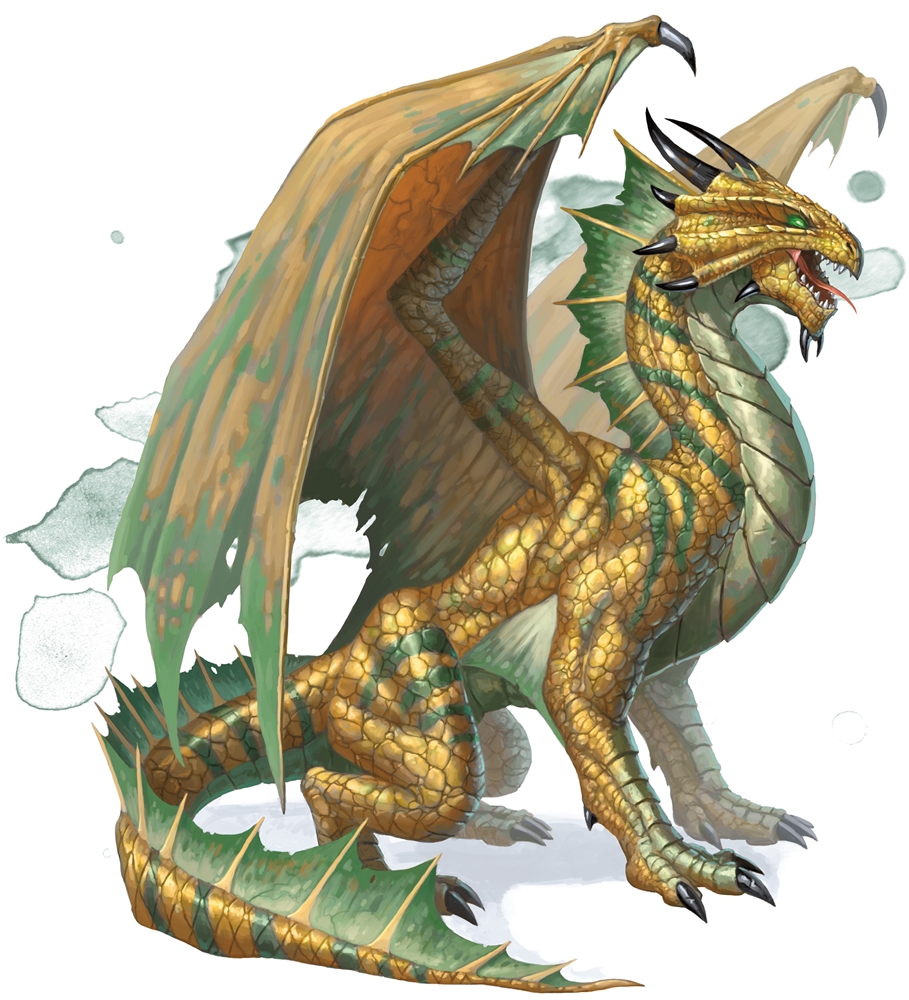You are using an out of date browser. It may not display this or other websites correctly.
You should upgrade or use an alternative browser.
You should upgrade or use an alternative browser.
D&D 5E (2024) Interested in new dragon designs for 5e (5.5e or 6e)?
- Thread starter dave2008
- Start date
Yaarel
🇮🇱 🇺🇦 He-Mage
Dragons are awesome.
Essentially, and archetypally, the dragon is a kind of snake.
I feel if a dragon design loses its recognizability as a snake, then it is no longer a dragon.
That said, the dragon is a monstrous snake and can blend features from other animals.
Essentially, the dragon is a conflation embodying all of the dangerous aspects of nature. Thus the dragon differs from region to region, depending on what natural dangers are in that locality.
One of my favorite dragons is the Norse dreki. It is a snake whose snake head has lionlike features (or sometimes wolflike), goatlike horns, and eaglelike (or hawklike, or eellike) features, such as talons.
What I like about it is its phases of aging.
• A newborn dreki (wyrmling) looks exactly like a normal snake (european viper with goldish-silverish and black patterns), except if you notice, the head has two horns sweeping back.
• The large adolescent dreki (young) emerges from its shed skin with two eaglelike legs that seem morelike arms, each with talon-like hands. (Compare the D&D linnorm.) It glides snakelike with the front upright at human height with prehensile arms manipulating objects with its hands. Alternatively its hands can pull the ground while gliding at high speed.
• The gargantuan ancient dragon adds eaglelike wings.
The snake venom can alternatively be a poison spray, icy like numbing arctic water, or a flaming fire.
The Norse dragon is actually a jotunn giant (or dvergr dwarf) who has shapeshifted into a snake, in this case a monstrous snake. If the jotunn is a risi, then the original human shape is beautiful. But in snake form, it takes on the beastly mind of a snake, and sometimes never returns to human shape. Families of dragon-shape jotunn can become as if a species of dragon. Some dragons retain their original high intelligence and magic.
Essentially, and archetypally, the dragon is a kind of snake.
I feel if a dragon design loses its recognizability as a snake, then it is no longer a dragon.
That said, the dragon is a monstrous snake and can blend features from other animals.
Essentially, the dragon is a conflation embodying all of the dangerous aspects of nature. Thus the dragon differs from region to region, depending on what natural dangers are in that locality.
One of my favorite dragons is the Norse dreki. It is a snake whose snake head has lionlike features (or sometimes wolflike), goatlike horns, and eaglelike (or hawklike, or eellike) features, such as talons.
What I like about it is its phases of aging.
• A newborn dreki (wyrmling) looks exactly like a normal snake (european viper with goldish-silverish and black patterns), except if you notice, the head has two horns sweeping back.
• The large adolescent dreki (young) emerges from its shed skin with two eaglelike legs that seem morelike arms, each with talon-like hands. (Compare the D&D linnorm.) It glides snakelike with the front upright at human height with prehensile arms manipulating objects with its hands. Alternatively its hands can pull the ground while gliding at high speed.
• The gargantuan ancient dragon adds eaglelike wings.
The snake venom can alternatively be a poison spray, icy like numbing arctic water, or a flaming fire.
The Norse dragon is actually a jotunn giant (or dvergr dwarf) who has shapeshifted into a snake, in this case a monstrous snake. If the jotunn is a risi, then the original human shape is beautiful. But in snake form, it takes on the beastly mind of a snake, and sometimes never returns to human shape. Families of dragon-shape jotunn can become as if a species of dragon. Some dragons retain their original high intelligence and magic.
Last edited:
dave2008
Legend
I might debate the recognizably a snake part, but in general I agree with you to some extent - for RL dragon myths. However, that is not the point of this thread. I am discussing D&D dragons and they already have history to consider. In D&D they are not myths be real threats.Dragons are awesome.
Essentially, and archetypally, the dragon is a kind of snake.
I feel if a dragon design loses its recognizability as a snake, then it is no longer a dragon.
That said, the dragon is a monstrous snake and can blend features from other animals.
Essentially, the dragon is a conflation embodying all of the dangerous aspects of nature. Thus the dragon differs from region to region, depending on what natural dangers are in that locality.
That being said, as my examples show, i do want to make the black dragon a lot more serpent like and add some back to the red as well. I feel the green and white should have less "snakey" elements and I am not sure about the blue.
That is a cool idea, and it is shared by other cultures as well. I have actually used the concept before: In one of my campaigns, Dragonborn were just young dragons.What I like about it is its phases of aging.
I think I could behind a similar idea of D&D dragons, but I don't really every use young ones so maybe I'm not the best barometer on this subject.
Yaarel
🇮🇱 🇺🇦 He-Mage
D&D has conflictive traditions about dragons, sometimes the same dragon looks more snake, sometimes they look more lion.I am discussing D&D dragons and they already have history to consider.
Think about the environment that each dragon is in.In D&D they are not myths be real threats.
If they are aquatic, they might have fish or eel features.
If they are mountainous, they might have goat and eagle features.
Pretty much all dragons have snake-lion features, but then again, sometimes it is snake-wolf, or other animal.
I am unaware of the other cultures that have their dragon grow in stages.That is a cool idea, and it is shared by other cultures as well.
I agree, for dragons that grow in stages, the Young stage makes excellent player character races.I have actually used the concept before: In one of my campaigns, Dragonborn were just young dragons.
I think I could behind a similar idea of D&D dragons, but I don't really every use young ones so maybe I'm not the best barometer on this subject.
Also, for Norse traditions, because of the aspect of shapeshifting, the dragon can grow magically. In other words, increase size and stage while leveling.
My difficulty with the Dragonborn is, they lack a serpentine tail. I am unable to interpret their appearances as any kind of ‘dragon’. I think of them more as resembling the Egyptian god Sobek, a human with a crocodile head.
Ideally, the Dragonborn would lack legs, and instead slither as a large snake, while the upright body has arms, and the tail can be prehensile.
If it was truly serpentine, I could feel the dragon flavor of the Dragonborn.
D&D 4e gave the tail to the Tiefling and not to the Dragonborn. I always felt they got that choice wrong.
An adult-stage dragon, would be a snake with limbs. If choosing to Medium size, this would resemble a Dragonborn with a tail.
Last edited:
Yaarel
🇮🇱 🇺🇦 He-Mage
Here are some D&D dragons that look somewhat serpentine.

Actually, the D&D logo makes an awesome Norse dragon in the newborn (wyrmling) stage.

One of my favorite dragons of D&D. It resembles the official dragon logo. Albeit, it gets used for an illustration for a giant snake. Notice its horns and the lion-like features of the head. Perfect.




A mythologically accurate gold dragon. (Actually there are many different kinds of Chinese dragons, but something like this is one of them.)


These seem like D&D ‘salamander’, but the look as a snake with arms resembles the dragon in its adolescent (young) stage.



The next one is from Pathfinder but gives some sense of what an adolescent dragon looks like when walking on its hands. Actually the torso-tail needs to be much longer as a counterweight to support it being upright to use the hands to wield objects.
:origin()/pre00/5e45/th/pre/f/2012/022/d/7/linnorm_taiga_by_thedjib-d4na1ag.jpg)

Actually, the D&D logo makes an awesome Norse dragon in the newborn (wyrmling) stage.

One of my favorite dragons of D&D. It resembles the official dragon logo. Albeit, it gets used for an illustration for a giant snake. Notice its horns and the lion-like features of the head. Perfect.




A mythologically accurate gold dragon. (Actually there are many different kinds of Chinese dragons, but something like this is one of them.)


These seem like D&D ‘salamander’, but the look as a snake with arms resembles the dragon in its adolescent (young) stage.



The next one is from Pathfinder but gives some sense of what an adolescent dragon looks like when walking on its hands. Actually the torso-tail needs to be much longer as a counterweight to support it being upright to use the hands to wield objects.
:origin()/pre00/5e45/th/pre/f/2012/022/d/7/linnorm_taiga_by_thedjib-d4na1ag.jpg)
Last edited:
Yaarel
🇮🇱 🇺🇦 He-Mage
Key features that make the design more serpentine, thus more draconic.
• Length, the overall length from head to tail should convey a snake. In D&D this means an extended neck and an extremely long tail.
• Transition, from head to torso and from torso to tail, must be continuous, rather than ‘broken’ like a horse neck. In other words, there should be no way to tell where the torso ends and the neck begins. Likewise, no way to tell where the torso ends and the tail begins.
• Slimness, the torso needs to be slim, proportionate to the neck and tail. However, it is ok if the shoulder area of the arms are muscular and appear ‘built’.
• Snakelike head, preferably the head retains some recognizably serpentine features, albeit the head is where the most diversity in design is possible. A snake tongue always helps.
• Length, the overall length from head to tail should convey a snake. In D&D this means an extended neck and an extremely long tail.
• Transition, from head to torso and from torso to tail, must be continuous, rather than ‘broken’ like a horse neck. In other words, there should be no way to tell where the torso ends and the neck begins. Likewise, no way to tell where the torso ends and the tail begins.
• Slimness, the torso needs to be slim, proportionate to the neck and tail. However, it is ok if the shoulder area of the arms are muscular and appear ‘built’.
• Snakelike head, preferably the head retains some recognizably serpentine features, albeit the head is where the most diversity in design is possible. A snake tongue always helps.
Last edited:
dave2008
Legend
Don't you mean felineD&D has conflictive traditions about dragons, sometimes the same dragon looks more snake, sometimes they look more lion.
Yep, environment would be key, I touched on that in the pictures I added to the OP.Think about the environment that each dragon is in.
If they are aquatic, they might have fish or eel features.
If they are mountainous, they might have goat and eagle features.
Pretty much all dragons have snake-lion features, but then again, sometimes it is snake-wolf, or other animal.
Definitely asian dragons (some if not all start as carps). And I seem to recall some similar mesoamerican traditions as well that are similar. Shapeshifting is also a common theme in Asiatic dragons.I am unaware of the other cultures that have their dragon grow in stages.
I give dragon born tails in my games and they eventually grow wings. Not really interested in legless dragonborn for my campaign, but that could work for yours.I agree, for dragons that grow in stages, the Young stage makes excellent player character races.
Also, for Norse traditions, because of the aspect of shapeshifting, the dragon can grow magically. In other words, increase size and stage while leveling.
My difficulty with the Dragonborn is, they lack a serpentine tail. I am unable to interpret their appearances as any kind of ‘dragon’. I think of them more as resembling the Egyptian god Sobek, a human with a crocodile head.
Ideally, the Dragonborn would lack legs, and instead slither as a large snake, while the upright body has arms, and the tail can be prehensile.
If it was truly serpentine, I could feel the dragon flavor of the Dragonborn.
D&D 4e gave the tail to the Tiefling and not to the Dragonborn. I always felt they got that choice wrong.
Yaarel
🇮🇱 🇺🇦 He-Mage
For an example of stages of development.
Here is a runestone depicting a Swedish dragon, during the Viking Era. (Actually, it is the Christian vikings who use a dragon to represent a christian family, for reasons that are less than clear. Christian vikings love the dragon.)
If you look carefully, you can see the mother dragon coiling around the edge of the runestone. She is protecting her young. This trope of a dragon mother fiercely protecting her young is a salient Norse archetype.

The coloring is modern, but historically plausible.
The artwork is highly stylized, but many of the features are clear.
The mother in red is still in the young phase (which is the normal depiction for a Norse dragon). At the bottom center, notice her arms, which are actually eagle legs, but functioning as arms. Her head has horns and fangs, and large perceptive eyes. Her tail ends in a forked tail (a Swedish thing).
Within her protective coil, she has a young daughter, also in red and also with arms and split tail. Where torso transitions into tail, she has an egg sack, for a future generation of the dragon family.
Finally, in white, all of the dragon children are in their ‘wyrmling’ stage, and look like normal snakes. One of them shows the new horns beginning grow.
I know of one runestone that depicts an ancient dragon with wings and arms. The wings are eaglelike (rather than batlike). The Poetic Edda mentions a gargantuan ancient dragon with wings.
Here is a runestone depicting a Swedish dragon, during the Viking Era. (Actually, it is the Christian vikings who use a dragon to represent a christian family, for reasons that are less than clear. Christian vikings love the dragon.)
If you look carefully, you can see the mother dragon coiling around the edge of the runestone. She is protecting her young. This trope of a dragon mother fiercely protecting her young is a salient Norse archetype.

The coloring is modern, but historically plausible.
The artwork is highly stylized, but many of the features are clear.
The mother in red is still in the young phase (which is the normal depiction for a Norse dragon). At the bottom center, notice her arms, which are actually eagle legs, but functioning as arms. Her head has horns and fangs, and large perceptive eyes. Her tail ends in a forked tail (a Swedish thing).
Within her protective coil, she has a young daughter, also in red and also with arms and split tail. Where torso transitions into tail, she has an egg sack, for a future generation of the dragon family.
Finally, in white, all of the dragon children are in their ‘wyrmling’ stage, and look like normal snakes. One of them shows the new horns beginning grow.
I know of one runestone that depicts an ancient dragon with wings and arms. The wings are eaglelike (rather than batlike). The Poetic Edda mentions a gargantuan ancient dragon with wings.
Last edited:
Yaarel
🇮🇱 🇺🇦 He-Mage
Are you sure that is a mythologically accurate Chinese tradition − as opposed to a D&D disinformation?Definitely asian dragons (some if not all start as carps).
Yeah the serpentine tail is the most important thing to make a Dragonborn draconic.I give dragon born tails in my games and they eventually grow wings. Not really interested in legless dragonborn for my campaign, but that could work for yours. An adult-stage dragon, would be a snake with arms and legs. If choosing to Medium size, this would resemble a Dragonborn with a tail.
dave2008
Legend
Those are all good suggestions for making a serpentine dragon, however...• Length, the overall length from head to tail should convey a snake. In D&D this means an extended neck and an extremely long tail.
• Transition, from head to torso and from torso to tail, must be continuous, rather than ‘broken’ like a horse neck. In other words, there should be no way to tell where the torso ends and the neck begins. Likewise, no way to tell where the torso ends and the tail begins.
• Slimness, the torso needs to be slim, proportionate to the neck and tail. However, it is ok if the shoulder area of the arms are muscular and appear ‘built’.
• Snakelike head, preferably the head retains some recognizably serpentine features, albeit the head is where the most diversity in design is possible. A snake tongue always helps.
...I don't agree that more serpentine = more draconic in all cases. I think we need to allow for a wider variety of forms.Key features that make the design more serpentine, thus more draconic.
Regardless, thank you for all the good ideas!
Similar Threads
- Replies
- 2
- Views
- 627
- Replies
- 29
- Views
- 3K
- Replies
- 56
- Views
- 7K
D&D General
6E But A + Thread
- Replies
- 2K
- Views
- 113K
- Replies
- 56
- Views
- 28K
Recent & Upcoming Releases
-
June 18 2026 -
October 1 2026


